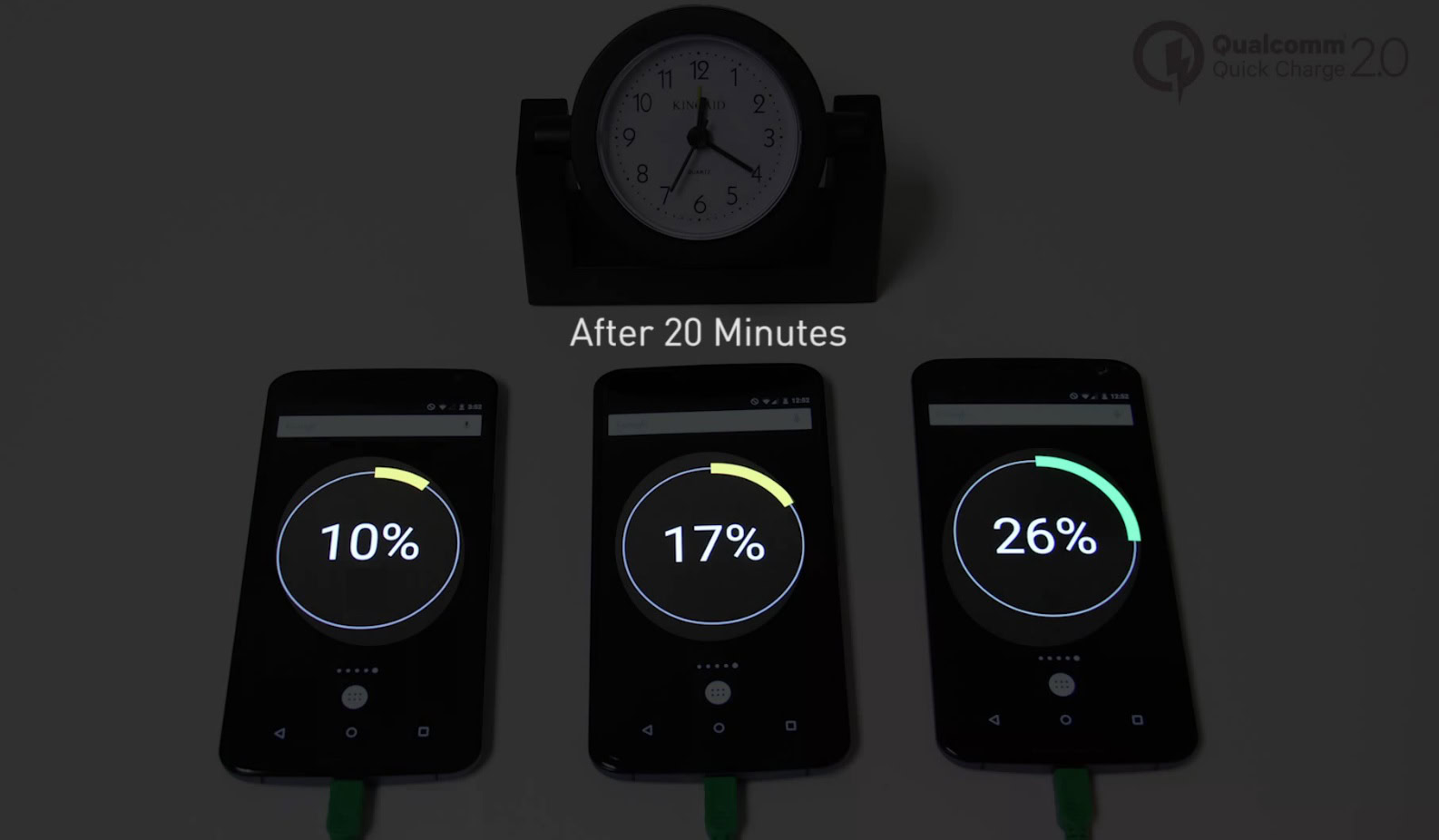Affiliate links on Android Authority may earn us a commission. Learn more.
Qualcomm pits its Quick Charge 2.0 tech against conventional chargers in this video
Published onMarch 25, 2015

https://www.youtube.com/watch?feature=player_embedded&v=Ut6lemu_N64
Quick Charge 2.0 technology has become an increasingly common feature of high-end smartphones this past year or so, offering faster charging speeds to get your phone back up and running ask quickly as possible. If you’re interested in just how much faster Quick Charge 2.0 is compared with regular chargers, you should check out Qualcomm’s latest video test (above).
Qualcomm took six Nexus 6’s, which feature a large 3,200mAh battery, and charged them from empty, using a regular 5 volt / 1 amp charger, 5 volt / 2 amp charger, and a Quick Charge 2.0 charger, which should be providing up to 3 amps of current, according to the specification.
As you might expect, the additional power available via Quick Charge 2.0 allows the device to reach 50 percent battery life rather quickly, which took just 40 minutes. The 2 amp charger managed to fill the battery up 32 percent, while the 1 amp charger struggled with just 22 percent after 40 minutes. This is pretty useful to know, given that some flagship smartphones struggle to provide a full day of heavy usage.
The specification supports a small range of different voltages and currents on different devices and chargers. You can find 2.5 and 3 amp compatible chargers and phones, capable of working with voltages from 5 to 12. Not every phone and charger combination will necessarily charge quite as fast as the Nexus 6 in this video and real world results will vary depend on the battery capacity, but it should be pretty close.
To make use of Quick Charge 2.0, you will require a compatible phone and a charger capable of pumping out enough current. Don’t worry about the branding, a Motorola charger will work fine with Quick Charge on an HTCphone or other branded handset, and vice versa.
If you would like a closer look at how Qualcomm Quick Charge 2.0 works, be sure to check out our technology breakdown.